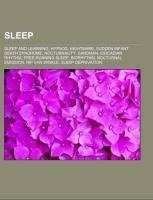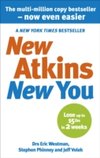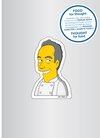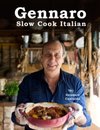
-
 Anglický jazyk
Anglický jazyk
Sleep
Autor: Source: Wikipedia
Source: Wikipedia. Pages: 109. Chapters: Sleep and learning, Hypnos, Nightmare, Sudden infant death syndrome, Nocturnality, Sandman, Circadian rhythm, Free-running sleep, Biorhythm, Nocturnal emission, Rip Van Winkle, Sleep deprivation, Effects of sleep... Viac o knihe
Na objednávku, dodanie 2-4 týždne
24.30 €
bežná cena: 27.00 €
O knihe
Source: Wikipedia. Pages: 109. Chapters: Sleep and learning, Hypnos, Nightmare, Sudden infant death syndrome, Nocturnality, Sandman, Circadian rhythm, Free-running sleep, Biorhythm, Nocturnal emission, Rip Van Winkle, Sleep deprivation, Effects of sleep deprivation on cognitive performance, Narcolepsy, Seven Sleepers, Yawn, Positive airway pressure, Xyrem, Oneirology, Activation-synthesis hypothesis, Co-sleeping, Polyphasic sleep, Alarm clock, Chronotype, Sleep and creativity, Tony Wright, Siesta, K-complex, Nap, Cataplexy, Randy Gardner, Sleep debt, Sleep induction, Sleeping while on duty, Dark therapy, Segmented sleep, Sleep onset, Power nap, Actigraphy, Night owl, Sleep onset latency, Sleep-deprived driving, Sleeping positions, Somnolence, Alcohol use and sleep, American Academy of Sleep Medicine, Peter Tripp, Blindfold, Ferber method, Multiple Sleep Latency Test, Microsleep, Sleep diary, Sleep inertia, Polysomnographic technician, Bundling, Enchanted loom, Counting sheep, Sleep hygiene, Sleep spindle, Bedtime, WakeMate, White noise machine, Zeo, Inc., Why We Nap: Evolution, Chronobiology, and Functions of Polyphasic and Ultrashort Sleep, Sleep-wake activity inventory, Dyssomnia, Dream Guide, Sleeping gas, Lark, Sleepover, Sleep architecture, Disk-over-water method, Caffeine-induced sleep disorder, Flowerpot technique, Richard Ferber, American Sleep Association, Wake therapy, Automatic Positive Airway Pressure, Sopor, Sleep inversion, Junk sleep, Jum sum. Excerpt: Sleep is a naturally recurring state characterized by reduced or absent consciousness, relatively suspended sensory activity, and inactivity of nearly all voluntary muscles. It is distinguished from quiet wakefulness by a decreased ability to react to stimuli, and is more easily reversible than being in hibernation or a coma. Sleep is also a heightened anabolic state, accentuating the growth and rejuvenation of the immune, nervous, skeletal and muscular systems. It is observed in all mammals, all birds, and many reptiles, amphibians, and fish. The purposes and mechanisms of sleep are only partially clear and are the subject of intense research. Sleep is often thought to help conserve energy, but actually decreases metabolism only about 5-10%. Hibernating animals need to sleep despite the hypometabolism seen in hibernation, and in fact they must return from hypothermia to euthermy in order to sleep, making sleeping "energetically expensive." Sleeping child In mammals and birds, sleep is divided into two broad types: rapid eye movement (REM) and non-rapid eye movement (NREM or non-REM) sleep. Each type has a distinct set of associated physiological, neurological, and psychological features. The American Academy of Sleep Medicine (AASM) further divides NREM into three stages: N1, N2, and N3, the last of which is also called delta sleep or slow-wave sleep (SWS). Hypnogram showing sleep cycles from midnight to 6.30 am, with deep sleep early on. There is more REM (marked red) before waking. Stage N3 sleep; EEG highlighted by red box. Thirty seconds of deep sleep, here with greater than 50% delta waves. REM sleep; EEG highlighted by red box; eye movements highlighted by red line. Thirty seconds of sleep.Sleep proceeds in cycles of REM and NREM, the order normally being N1 ¿ N2 ¿ N3 ¿ N2 ¿ REM. There is a greater amount of deep sleep (stage N3) earlier in the sleep cycle, while the proportion of REM sleep increases later in the sleep cycle and just before natural awakening.
- Vydavateľstvo: Books LLC, Reference Series
- Rok vydania: 2013
- Formát: Paperback
- Rozmer: 246 x 189 mm
- Jazyk: Anglický jazyk
- ISBN: 9781156606407









 Nemecký jazyk
Nemecký jazyk 

 Španielsky jazyk
Španielsky jazyk 
